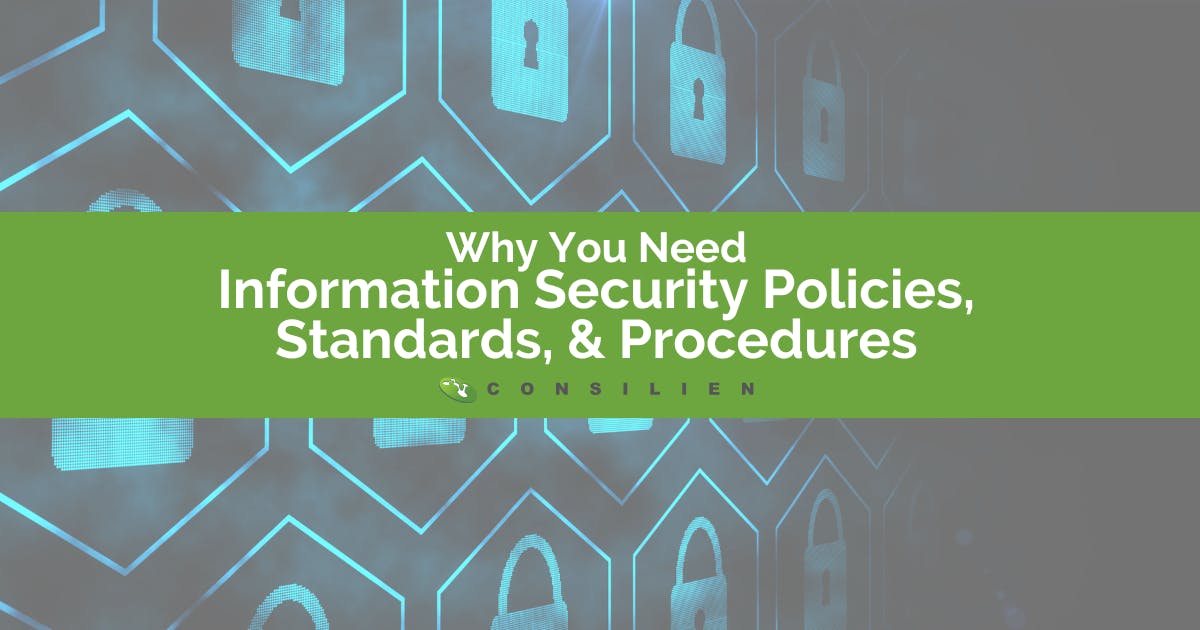WHY YOU NEED INFORMATION SECURITY POLICIES, STANDARDS, AND PROCEDURES

This is our attempt to convince you of the importance of having written and implemented Information Security, Policies, Standards, and Procedures.
We know that documentation is rarely anyone's favorite job (except ours. We like that sort of thing). They can be tedious to create, especially when you have day-to-day operations to run. But if want to create a culture of security awareness at your company, then you need to give employees a framework to follow.
Policies
The National Institute of Standards and Technology (NIST) defines an information security policy as an "aggregate of directives, regulations, rules, and practices that prescribes how an organization manages, protects, and distributes information."
These high-level statements present which security goals are important to the company. The objectives are often based on how the organization views its risk factors.
For example, a financial institution may have a policy for restricting the use of personal mobile devices at work due to the sensitivity of customer information on the network, whereas a small business, like a daycare, may not need such protections.
When writing information security policies, the main question is, "Where is the risk, and what are we planning to do to mitigate it?"
Standards
Standards are more in-depth than policies. They state the criteria to which the company will hold itself. This documentation also outlines what's being done to satisfy internal and external compliance regulations and frameworks. Standards will define how objectives supporting the IS policies are accomplished, but the step-by-step instructions are left to procedure documentation.
Procedures
Procedures are step-by-step instructions to carry out policies and standards, the "how-to" section of the ISPS documentation. It should specify individual employees' and departments' responsibilities. For every area the policy covers, there should be a corresponding procedure to address the specifics.
Benefits
Some organizations don't implement Information Security Policies, Standards, and Procedures until they are needed or have a problem. However, creating these documents ahead of time has many advantages.
For example, many regulatory bodies require companies to have this document to remain in compliance.
Third-party vendors can also ask for a copy of the policies to ensure they want to do business with the company.
Also, if the organization wishes to purchase cybersecurity insurance, it's almost a guaranteed necessity to qualify.
Policies and standards also keep employees accountable for their actions and help to maintain a positive security posture throughout the organization.
References: